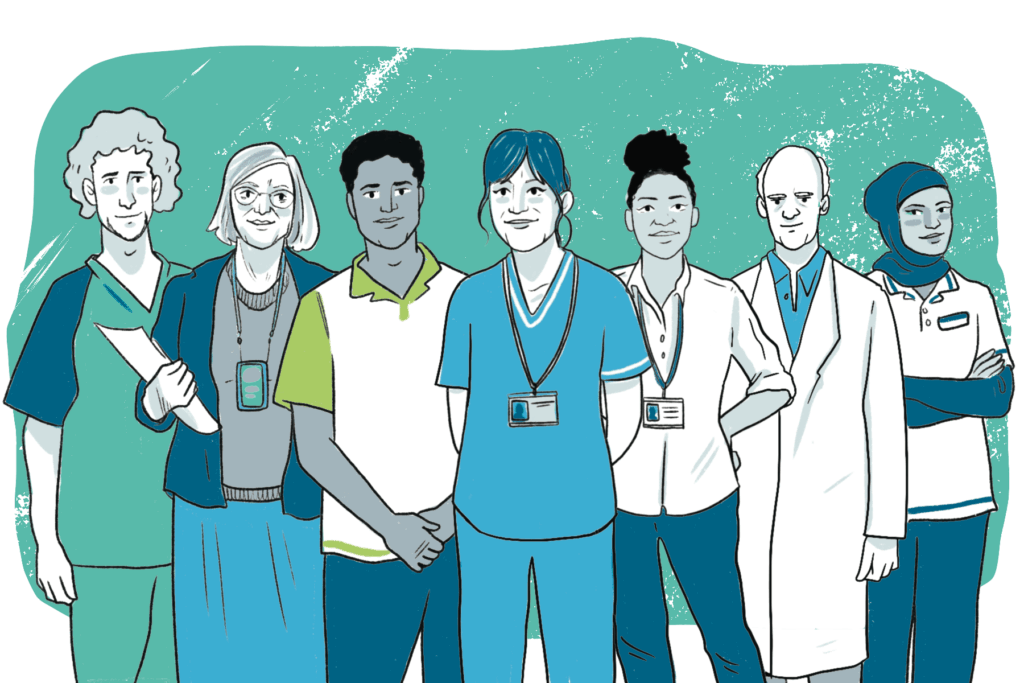A bleed is a bleed – whatever your diagnosis

The theme of World Hemophilia Day this year is “Access for All: Prevention of bleeds as the global standard of care”. There is absolutely nothing about this that you couldn’t agree with. We know that 80% of people with haemophilia in the world either have no diagnosis or no access to care, and that prophylaxis (for those who can get it) makes life SO much better – with less bleeding, less pain, better joint health and quality of life – hoorah!
Now here comes the but…
World Hemophilia Day is not just about boys and men with haemophilia. It is about all people with bleeding disorders – be that women with haemophilia or people with von Willebrand disease or rare bleeding disorders, for whom bleeding is bleeding whatever their diagnosis. Getting a diagnosis of a rare bleeding disorder is known to take longer than getting a diagnosis of haemophilia. Diagnosis is also known to be slower for women with a bleeding disorder [1].For lots of people, diagnosis can take years – many years. And if you’re a woman, access to treatment can be very different from your male counterparts.
Learning from haemophilia
Haemophilia is now much more recognised, with more people (mostly males) being diagnosed and thus able to get access to treatment. Most of the therapeutic advances we’ve seen over the past decades have been in haemophilia. In recent years this has gathered pace – we’ve seen extending half-lives, new molecules, new delivery methods (subcutaneous), and now gene therapy is just on the horizon. There must be all kinds of lessons we can learn from such an amazing trajectory. The development of new treatments and outcomes within haemophilia care needs to be used to benefit people with other bleeding disorders.
Prevention of bleeds for all
We know that bleeding in rare disorders is under-reported, and particularly when treatment options are limited. Haemnet’s recent research into Glanzmann’s Thrombasthenia reveals that affected people don’t tell health care professionals about ‘small’ bleeds because they are an everyday occurrence and treatment is either ineffective or has to be given in hospital [2]. Bleed after bleed after bleed causes anaemia, fatigue and reduces quality of life, with time lost from education/work. Often bleeds are so frequent that people would almost live in hospital if every single one was treated – much like those with haemophilia did 50 years ago.
If prevention of bleeds is the gold standard for all, we should be looking at prophylaxis for all members of the community with rare bleeding disorders who bleed, including menstruating women. We should be able to change the impact that bleeding has on the daily lives of affected individuals and their families, whatever their sex or diagnosis.
Every bleed matters.
References
1. Weyand AC, James PD. Sexism in the management of bleeding disorders. Res Pract Thromb Haemost 2021; 5(1): 51-54. doi: 10.1002/rth2.124682.
2. Khair K, Fletcher S, Jenner K, Pembroke L, Holland M. PO270. Glanzmann’s 360 – exploring quality of life and unmet need. 16th Annual Congress of European Association for Haemophilia and Allied Bleeding Disorders 2023, 7-10 February 2023, Manchester. Haemophilia 2023; 29(S1): 148. doi: 10.1111/hae.14715.
About the author
Kate Khair is Director of Research at Haemnet. Email: research@haemnet.com

Scan the QR Code to follow us on Social Media


